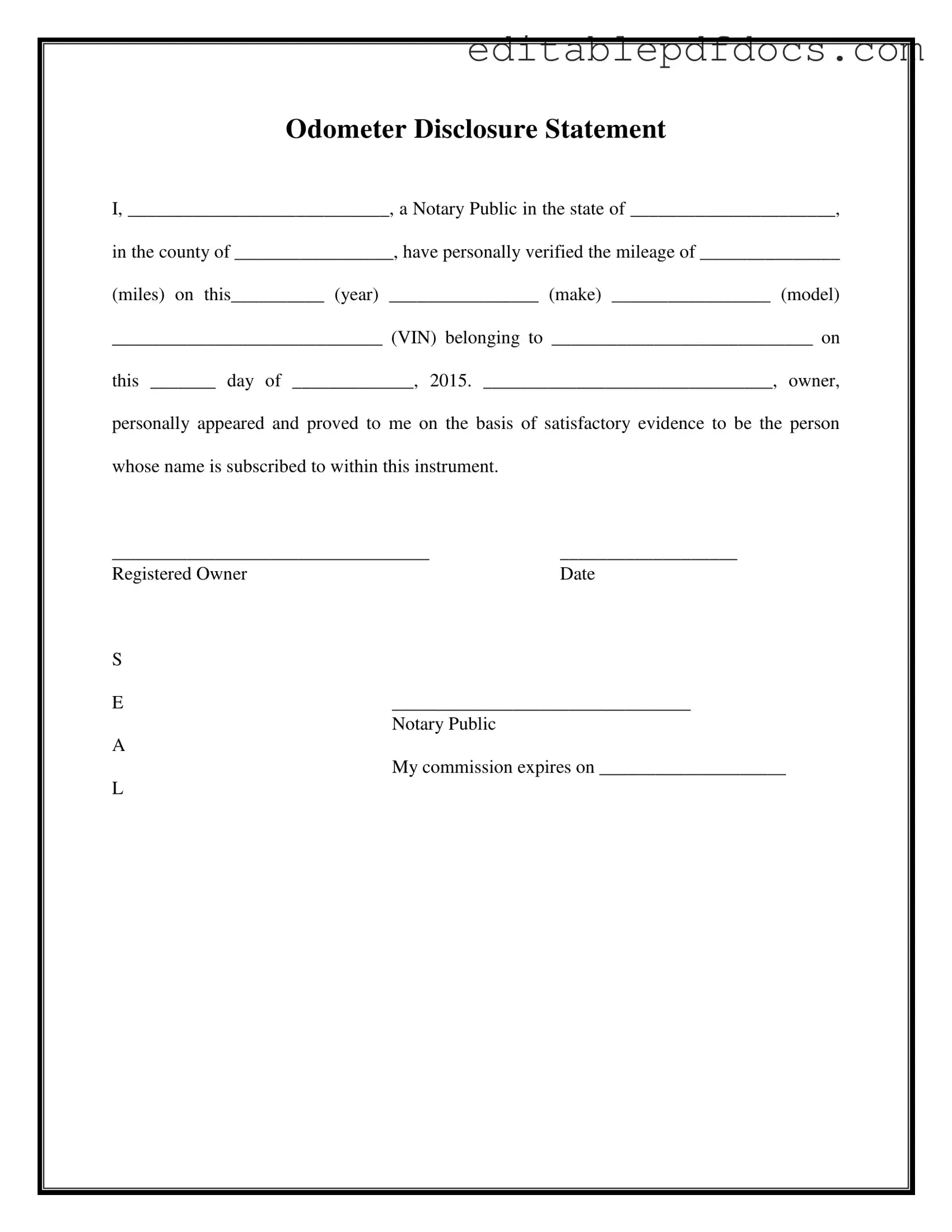Fill a Valid Notarized Odometer Statement Template
The Notarized Odometer Statement form serves as a crucial document in vehicle transactions, ensuring transparency regarding the mileage of a vehicle at the time of sale. This statement, verified by a notary public, provides essential details about the vehicle, including its make, model, and Vehicle Identification Number (VIN), alongside the recorded mileage. To ensure a smooth transaction, consider filling out the form by clicking the button below.
Open Editor Now
